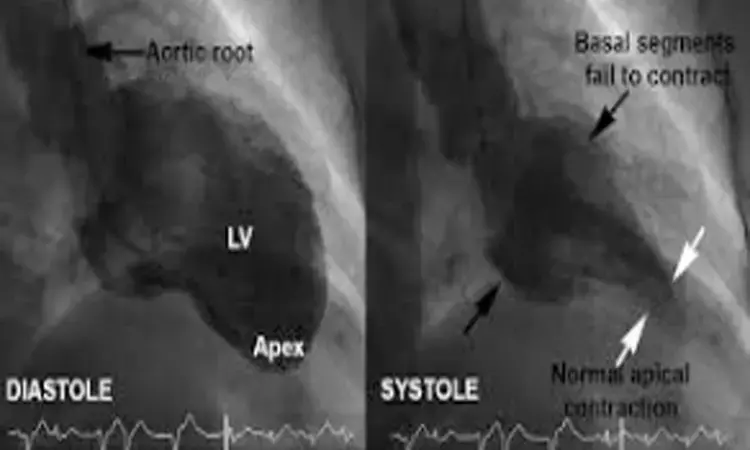- Home
- Medical news & Guidelines
- Anesthesiology
- Cardiology and CTVS
- Critical Care
- Dentistry
- Dermatology
- Diabetes and Endocrinology
- ENT
- Gastroenterology
- Medicine
- Nephrology
- Neurology
- Obstretics-Gynaecology
- Oncology
- Ophthalmology
- Orthopaedics
- Pediatrics-Neonatology
- Psychiatry
- Pulmonology
- Radiology
- Surgery
- Urology
- Laboratory Medicine
- Diet
- Nursing
- Paramedical
- Physiotherapy
- Health news
- Fact Check
- Bone Health Fact Check
- Brain Health Fact Check
- Cancer Related Fact Check
- Child Care Fact Check
- Dental and oral health fact check
- Diabetes and metabolic health fact check
- Diet and Nutrition Fact Check
- Eye and ENT Care Fact Check
- Fitness fact check
- Gut health fact check
- Heart health fact check
- Kidney health fact check
- Medical education fact check
- Men's health fact check
- Respiratory fact check
- Skin and hair care fact check
- Vaccine and Immunization fact check
- Women's health fact check
- AYUSH
- State News
- Andaman and Nicobar Islands
- Andhra Pradesh
- Arunachal Pradesh
- Assam
- Bihar
- Chandigarh
- Chattisgarh
- Dadra and Nagar Haveli
- Daman and Diu
- Delhi
- Goa
- Gujarat
- Haryana
- Himachal Pradesh
- Jammu & Kashmir
- Jharkhand
- Karnataka
- Kerala
- Ladakh
- Lakshadweep
- Madhya Pradesh
- Maharashtra
- Manipur
- Meghalaya
- Mizoram
- Nagaland
- Odisha
- Puducherry
- Punjab
- Rajasthan
- Sikkim
- Tamil Nadu
- Telangana
- Tripura
- Uttar Pradesh
- Uttrakhand
- West Bengal
- Medical Education
- Industry
Case of reverse takotsubo Cardiomyopathy caused by cryptogenic stroke- A report

reverse Takotsubo cardiomyopathy: normal apical kinesis with poor basal wall contraction.
Reverse Takotsubo cardiomyopathy (rTTC) is recognized as an atypical type of TTC. It has been suggested that neurological events are typical triggers of rTTC, especially in young individuals. Takafuji et al have reported an unusual case in the European Heart Journal about a 16-year-old presenting with cryptogenic stroke and acute heart failure; the underlying culprit was discovered to be paradoxical embolism through a PFO.
The case report describes a 16-year-girl who presented with neurological deficits due to embolic stroke and acute heart failure. Transthoracic echocardiography on admission revealed a severely reduced left ventricular (LV) function with akinesis of basal to mid-LV, but normal contraction in apex. Coronary computed tomography angiography confirmed unobstructed coronary arteries. Two weeks later, her LV wall motion and ejection fraction were completely normalized. Transthoracic echocardiography and transoesophageal echocardiography demonstrated no evidence of intracardiac thrombus but showed a patent foramen ovale (PFO) with a large shunt. After thorough work-up and brain–heart team discussion, it was concluded that the patient developed rTTC due to cryptogenic stroke related to her PFO. She underwent percutaneous PFO closure for secondary prevention with a good clinical course.
This is a very rare case of PFO-related cryptogenic stroke resulting in rTTC in a teenage girl. Neurological disorders especially stroke and subarachnoid haemorrhage have been linked with the trigger of TTC. TTC is part of a broad spectrum of cardiac alterations that may occur during the first few days after occurrence of acute brain disease. A previous study demonstrated that TTC occurs secondary to stroke in 1% of patients. The rTTC, an atypical type of TTC, occurs in 2.2% of all TTC cases.
The higher frequency of adrenoreceptors in the basal left ventricular wall (compared to the apical segment) in this age bracket is thought to be one of the main reasons for the higher prevalence of rTTC in younger individuals.
Patent foramen ovale-related stroke is a rare condition, but it has been suggested that this condition may be a more important contributor to strokes in younger patients. Appropriate patient selection for PFO closure through a comprehensive stroke workup with brain–heart team is crucial in order to offer the procedure to the patients who will benefit the most and avoid unnecessary procedures especially in the younger patient (age < 18 years old).
Source: Hiroya Takafuji, Junya Arai, Kuniyasu Saigusa, Kotaro Obunai, Reverse takotsubo cardiomyopathy caused by patent foramen ovale-related cryptogenic stroke: a case report, EuropeanHeartJournal-Case Reports,
MBBS, MD , DM Cardiology
Dr Abhimanyu Uppal completed his M. B. B. S and M. D. in internal medicine from the SMS Medical College in Jaipur. He got selected for D. M. Cardiology course in the prestigious G. B. Pant Institute, New Delhi in 2017. After completing his D. M. Degree he continues to work as Post DM senior resident in G. B. pant hospital. He is actively involved in various research activities of the department and has assisted and performed a multitude of cardiac procedures under the guidance of esteemed faculty of this Institute. He can be contacted at editorial@medicaldialogues.in.
Dr Kamal Kant Kohli-MBBS, DTCD- a chest specialist with more than 30 years of practice and a flair for writing clinical articles, Dr Kamal Kant Kohli joined Medical Dialogues as a Chief Editor of Medical News. Besides writing articles, as an editor, he proofreads and verifies all the medical content published on Medical Dialogues including those coming from journals, studies,medical conferences,guidelines etc. Email: drkohli@medicaldialogues.in. Contact no. 011-43720751


